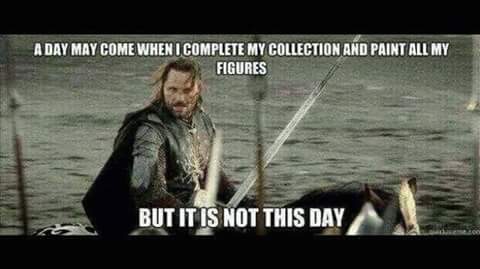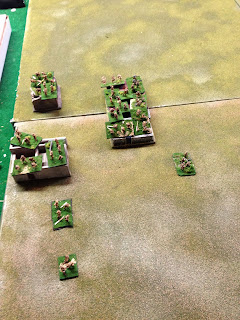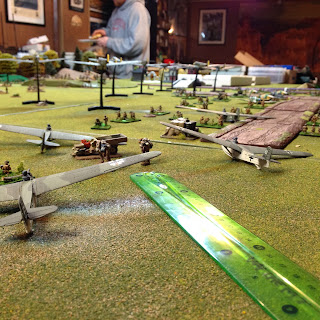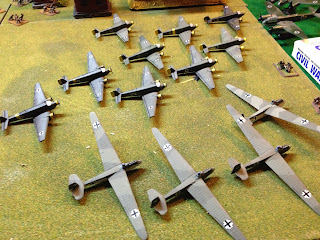At my Middle School we offer electives in 8th grade. In the quarter just ended I got to teach a History of Piracy class. We began in ancient times and progressed to the present day with naturally, an emphasis on the "Golden Age of Piracy." After completing their essay final exam I set up a simple pirate raid on a British holding using 25mm figures and a simplified version of Buccaneers, Broadswords and Blunderbusses, which uses quality dice. The premise was that at dawn a band of pirates with two leaders landed from the ocean, while another rival band came overland. The gallant defenders had a handful of grenadiers, a heroic leader on horseback and a bevy of largely terrified civilians. Each command carried gold doubloons with them and the objective was to have the most at the end.
The game:
Each group rolled 1d6 to determine who moved, fired and meleed first. In our game the seaborne pirates landed first and rushed towards the town walls, killing the night watchman who apparently was not very watchful.
Initially the pirates were successful, gunning down some grenadiers and civilians. When the two bands first came into contact I wondered if they could fight, but the call against the common enemy was too great and there never seemed to be any danger of the Brotherhood clashing.
Some pirates attempted to loot buildings while the fighting was going on. Two that tried at different times to dive through a window discovered that in the dim light they hadn't noticed the shutters. (Rolled a "6" on a d6) Others used the door.
Then the dice got hot for the defenders. The hero survived hit after hit and the toll of pirates began to rise. One band lost their leader and said their other one was back at the boats. So they had a -1 to their initiative dice for the remainder of the game. Some pirates entered buildings and found 1d6 of doubloons. One rolled back to back sixes and found a special treasure. Head for the woods! As a final incentive, a party of Royal Marines landed, shot the remaining pirate leader, and headed for town.
In the end the pirate band with seven survivors of their 18 men "won" with 22 doubloons. The special treasure putting them over the top. The defenders were second with 21, having found some on dead pirates to add to their starting number. Leaders who were hit could buy a saving throw by giving away a doubloon. All four that bought a second chance made their saves except one. The other group of pirates was, um, removed from play.
The game:
Each group rolled 1d6 to determine who moved, fired and meleed first. In our game the seaborne pirates landed first and rushed towards the town walls, killing the night watchman who apparently was not very watchful.
Initially the pirates were successful, gunning down some grenadiers and civilians. When the two bands first came into contact I wondered if they could fight, but the call against the common enemy was too great and there never seemed to be any danger of the Brotherhood clashing.
Some pirates attempted to loot buildings while the fighting was going on. Two that tried at different times to dive through a window discovered that in the dim light they hadn't noticed the shutters. (Rolled a "6" on a d6) Others used the door.
Then the dice got hot for the defenders. The hero survived hit after hit and the toll of pirates began to rise. One band lost their leader and said their other one was back at the boats. So they had a -1 to their initiative dice for the remainder of the game. Some pirates entered buildings and found 1d6 of doubloons. One rolled back to back sixes and found a special treasure. Head for the woods! As a final incentive, a party of Royal Marines landed, shot the remaining pirate leader, and headed for town.
In the end the pirate band with seven survivors of their 18 men "won" with 22 doubloons. The special treasure putting them over the top. The defenders were second with 21, having found some on dead pirates to add to their starting number. Leaders who were hit could buy a saving throw by giving away a doubloon. All four that bought a second chance made their saves except one. The other group of pirates was, um, removed from play.
Justice triumphs and a the pirates are driven away. Most of the players had never done a miniatures game before and none had done a vaguely historical game. A fitting end to an interesting class.


























